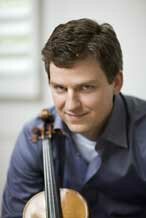Every New Year, the Seattle Symphony takes on Beethoven’s massive Ninth Symphony, but each year since music director Ludovic Morlot’s debut, the format has been slightly different. Yes, it’s the centerpiece, but he chose to pair it this time with Brahms’ Variations on a Theme by Haydn, another familiar and much-loved work, and he didn’t conduct himself, handing over the podium to the music director of the Oregon Symphony, Carlos Kalmar.
Kalmar is an imaginative conductor who uses his whole body to convey his wishes clearly to the orchestra. Watching him during the Brahms Thursday night at Benaroya Hall, it was fascinating to see him raising his arms to indicate a rising volume and to hear the orchestra mirroring his movement in sound at precisely the same speed and with the same quality. He shapes that sound and phrasing meticulously, his whole demeanor delineating precisely what he wants in shading and nuance. The result was a warm and satisfying performance of the Variations, decisive or jaunty, plenty of energy but without bring driven, each variation a small miracle of musicianship in itself.
The orchestra was pared down considerably for this concert, most of the principals being absent, but the quality was unimpaired, the prominent winds in the Brahms sounding as excellent as ever. Kalmar’s interpretation and the orchestra’s performance of the Beethoven can be described in one word: exuberant, but exuberance tempered with lightness and a wide dynamic range.
From the symphony’s triumphant opening statement and succeeding lyrical moments to a soft brief fugal entry, brash timpanic interruptions, and a stately opening to the third movement where Kalmar stroked the music along with his gestures, there was plenty of variety. When the last, choral movement began, he had the basses and cellos coming out of nothing, so quietly did they play, building the tension and volume very slowly as the other instruments joined in.
In his composing here, Beethoven gave little consideration to the sopranos of the chorus, whose role is unremittingly high and can all too often sound reduced to a shriek. It was much to the credit of the Seattle Symphony Chorus and its trainer, the orchestra’s associate conductor for choral activities Joseph Crnko, that they never sounded that way in this performance. Loud high, but not strained, and always musical.
The operatic voices of the four soloists, soprano Nathalie Paulin, mezzo soprano Angela Niederloh, tenor Brendan Tuohy, and baritone Charles Robert Stephens, also had no problem rising above the smaller orchestral forces. The whole performance was dramatic and exciting, and the audience surged to its feet enthusiastically at the end. It will be repeated Saturday night, and tonight, Friday, just the Beethoven will be performed in the Symphony Untuxed series.
